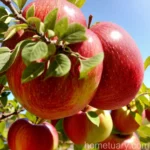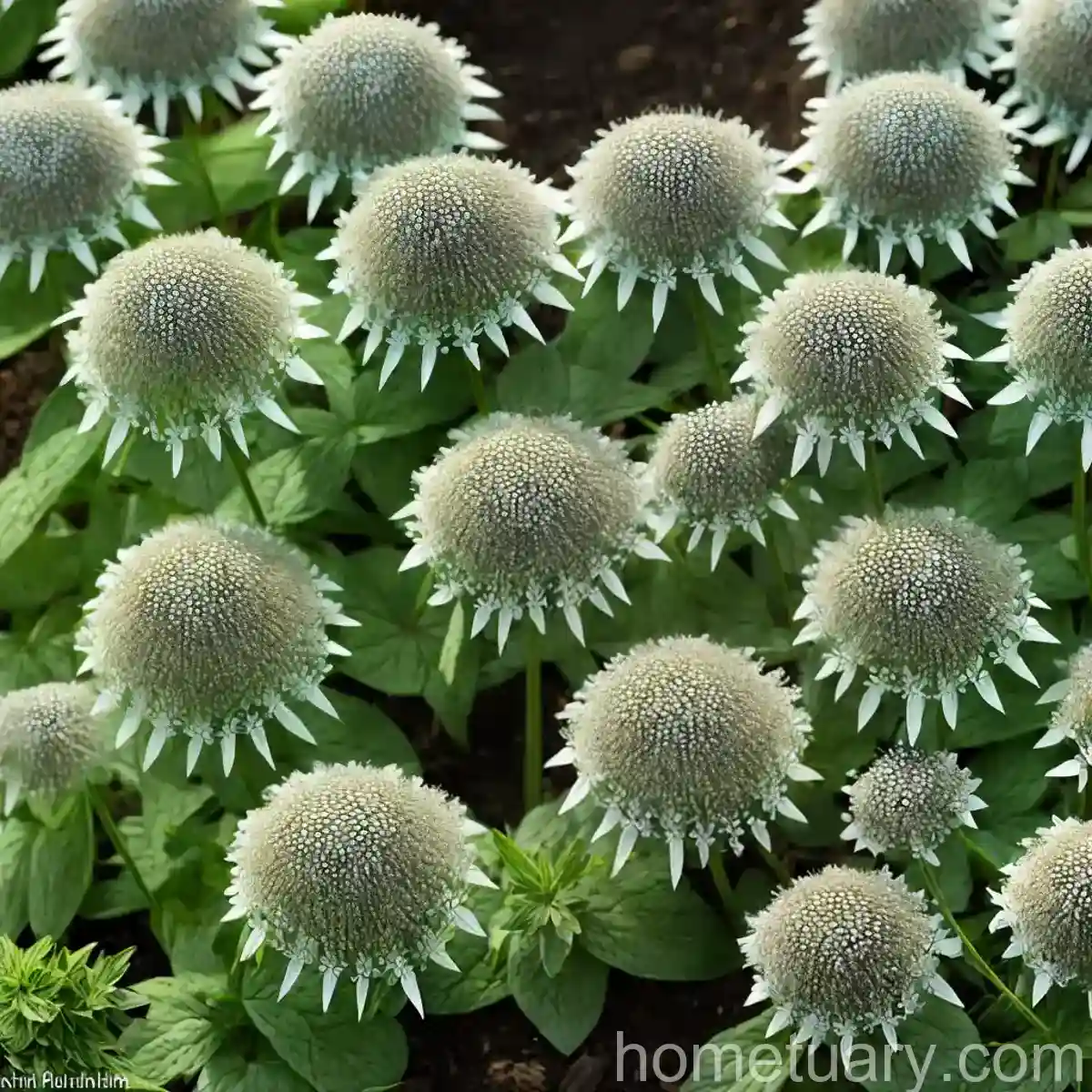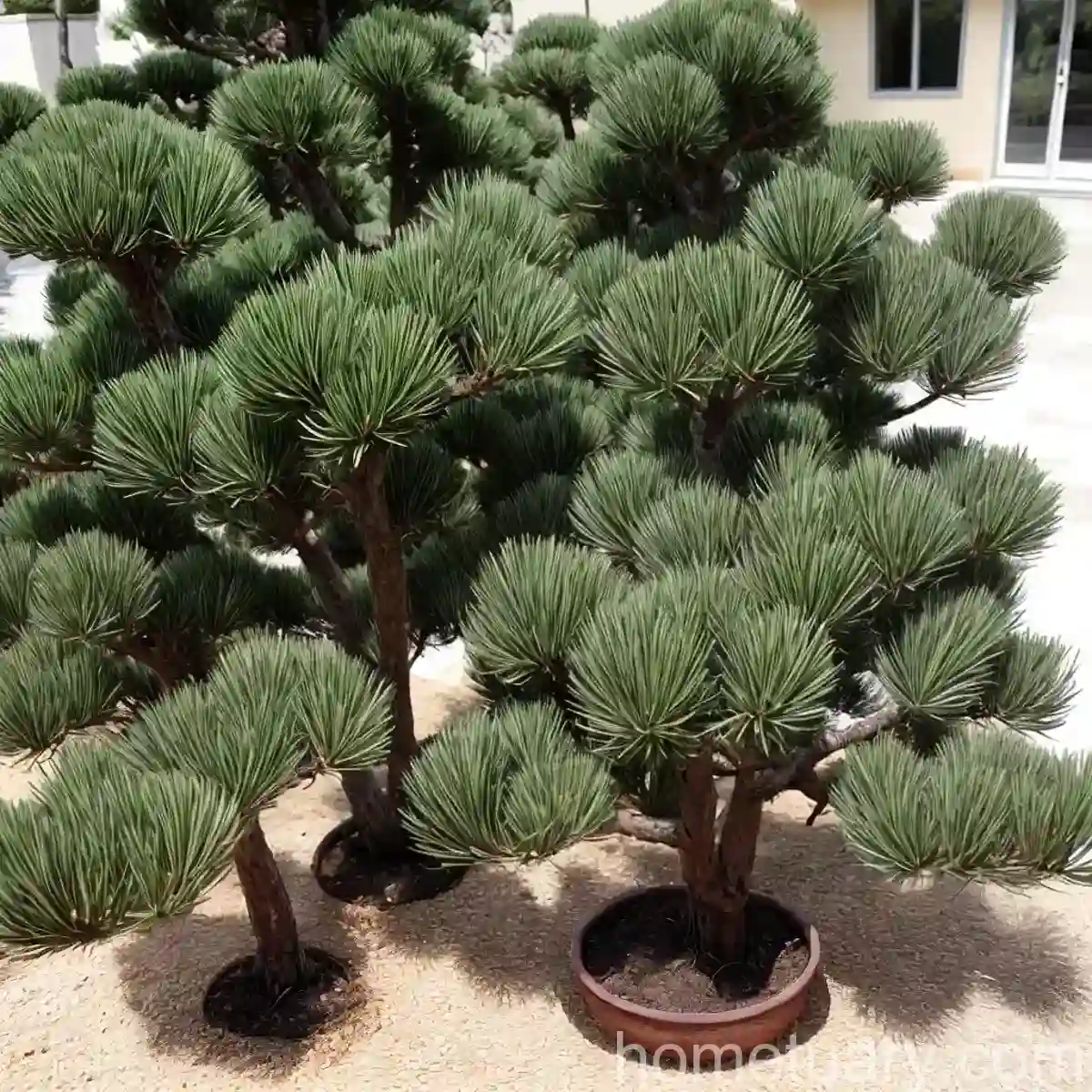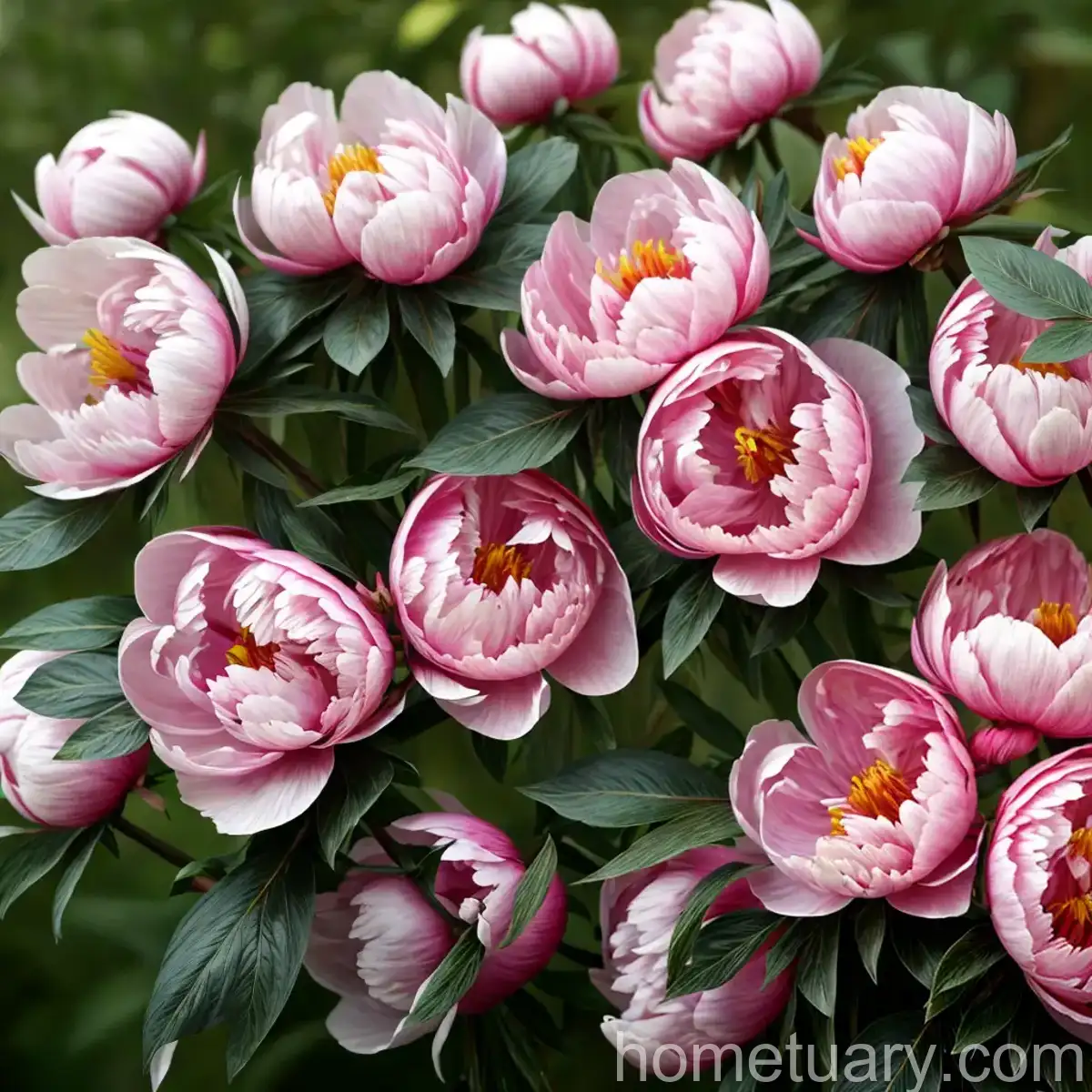Mount Fuji Cherry (Prunus ‘Shirotae’) – A Delicate Beauty of Nature
The Mount Fuji cherry, scientifically known as Prunus ‘Shirotae’, is a stunning flowering tree that captivates the senses with its delicate blossoms and graceful form. This beloved tree is part of the Prunus genus and is renowned for its showy display of white flowers that resemble delicate cherry blossoms. In this comprehensive guide, we will explore the enchanting world of Mount Fuji cherries, covering their culture, uses, care requirements, common diseases, pest management, and more.
What is Mount Fuji Cherry (Prunus ‘Shirotae’)?
The Mount Fuji cherry, often referred to as Prunus ‘Shirotae’, is a flowering cherry tree that belongs to the Rosaceae family. This deciduous tree is native to Japan and is highly valued for its ornamental appeal. The tree typically reaches a moderate height, making it suitable for various landscape applications, from residential gardens to public parks and streetscapes.
The Prunus ‘Shirotae’ variety is celebrated for its abundant springtime blossoms, which blanket the branches in a profusion of white flowers, reminiscent of snowflakes or delicate clouds. The tree’s graceful and spreading form adds to its visual appeal, creating a charming focal point in any setting.
Key Takeaways – Mount Fuji Cherry (Prunus ‘Shirotae’)
Before delving further into the world of Mount Fuji cherries, let’s highlight some key takeaways that will be explored in detail throughout this guide:
- Cultural Significance: The Mount Fuji cherry holds cultural significance and symbolizes ephemeral beauty and the transient nature of life in Japanese culture.
- Ornamental Uses: Prunus ‘Shirotae’ is primarily cultivated for its ornamental value, adding a touch of elegance to landscapes and gardens.
- Springtime Beauty: The tree’s exquisite white blossoms in spring deliver a captivating spectacle, attracting admirers from far and wide.
- Cultural Practices: Care requirements such as watering, sunlight, soil, fertilizer, and pruning methods are crucial for maintaining the health and vitality of Mount Fuji cherries.
Now, let’s embark on a captivating journey into the world of Mount Fuji cherries, uncovering the cultural significance, care practices, uses, and more that define this enchanting flowering tree.
Culture of Mount Fuji Cherry (Prunus ‘Shirotae’)
Ornamental Significance
The Mount Fuji cherry, with its ethereal blossoms and graceful form, holds significant cultural and ornamental value. The tree symbolizes ephemeral beauty in Japanese culture, and its pristine white flowers are an embodiment of purity and renewal. The fleeting nature of the blossoms underscores the transient essence of life, making the Mount Fuji cherry a poignant emblem of the cyclical rhythms of nature.
In gardens and landscapes, Prunus ‘Shirotae’ serves as a captivating ornamental specimen, enriching outdoor spaces with its captivating springtime display. Whether planted as a single focal point or in a grouping to create an enchanting floral vista, the tree’s picturesque charm never fails to captivate onlookers.
Botanical Attributes
The Mount Fuji cherry exhibits notable botanical features that contribute to its allure. The tree typically reaches a height of 15 to 25 feet, with a spread ranging from 20 to 30 feet, creating a broad and graceful canopy. Its moderate size makes it suitable for various settings, including small to medium-sized gardens, urban landscapes, and parkland.
The foliage of Prunus ‘Shirotae’ consists of oval to obovate leaves with serrated edges. The leaves adorn the tree with vibrant green hues during the growing season, providing a verdant backdrop that accentuates the purity of the blossoms.
Flowering Spectacle
The hallmark of the Mount Fuji cherry is its spectacular springtime blossoms. In early to mid-spring, the tree erupts in a profusion of fragrant, white flowers, creating a breathtaking display of natural beauty. The blossoms, reminiscent of delicate cherry blossoms, transform the tree into an ethereal vision, attracting admirers with their captivating allure and aesthetic appeal.
The delicate flowers, borne in clusters along the branches, imbue the tree with an air of elegance and serenity, casting a spell of tranquility over the landscape. The ephemeral nature of the blossoms reinforces their preciousness, evoking emotions of wonder and appreciation for the fleeting splendor of nature.
Uses of Mount Fuji Cherry (Prunus ‘Shirotae’)
Ornamental Landscaping
Prunus ‘Shirotae’ is primarily cultivated for its ornamental value, finding widespread use in landscaping and garden design. The tree’s exquisite springtime display positions it as a coveted addition to diverse outdoor settings, contributing to the creation of tranquil and picturesque environments.
In residential landscapes, Mount Fuji cherries serve as striking focal points, infusing gardens with a touch of elegance and natural beauty. Whether placed as a standalone specimen or incorporated into a mixed planting scheme, the tree’s blossoms and graceful form elevate the aesthetic appeal of any outdoor space.
Parkland Plantings
In public parks and botanical gardens, the Mount Fuji cherry adds a touch of theatrical splendor to the landscape. The tree’s prolific springtime blossoms captivate park visitors, creating an enchanting ambiance and offering a haven for contemplation amid the ephemeral beauty of nature. Additionally, the tree’s moderate size and graceful form make it an ideal candidate for parkland plantings, contributing to the creation of serene and visually captivating green spaces.
Streetscape Enhancement
Along urban streets and thoroughfares, Mount Fuji cherries lend a touch of natural beauty and seasonal spectacle to the urban fabric. When planted along sidewalks, boulevards, or in urban plazas, the trees infuse the urban environment with a serene and inviting atmosphere. As pedestrians and passersby are greeted by the tree’s stunning springtime display, the urban landscape is enlivened with the delicate charm of Prunus ‘Shirotae’.
Cultural Symbolism
The Mount Fuji cherry holds profound cultural significance, particularly in Japanese culture, where it symbolizes the transient nature of life and the beauty of fleeting moments. Embracing the concept of mono no aware, which reflects an appreciation of the impermanence of all things, the tree stands as an embodiment of nature’s ever-changing rhythms and the interconnectedness of life and the environment.
The tree’s association with cherry blossoms further accentuates its cultural symbolism, marking the arrival of spring and the renewal of life. Embracing themes of rebirth, renewal, and the passage of time, the Mount Fuji cherry evokes emotions of nostalgia, appreciation, and the bittersweet beauty of impermanence.
Care Requirements for Mount Fuji Cherry (Prunus ‘Shirotae’)
Water
Watering is essential for the establishment and ongoing health of Mount Fuji cherries. During the tree’s initial establishment phase, regular and consistent watering is crucial to promote root development and ensure the tree’s vigor. Once established, the tree demonstrates moderate drought tolerance, but it benefits from supplemental watering during prolonged dry spells, particularly in the summer months.
Sunlight
Mount Fuji cherries thrive in locations with full sun to partial shade. Adequate sunlight is essential for promoting robust flowering and overall tree health. When selecting a planting site, prioritize locations with sufficient sunlight exposure to maximize the tree’s ornamental potential and floral abundance.
Fertilizer
Fertilization plays a vital role in supporting the growth and blooming potential of Mount Fuji cherries. In early spring, apply a balanced, slow-release fertilizer specifically formulated for flowering trees to provide essential nutrients for healthy foliage and prolific blossoms. Follow the manufacturer’s guidelines for application rates and methods to ensure proper nourishment without risking over-fertilization.
Soil
Well-drained, fertile soils are optimal for Mount Fuji cherries, promoting healthy root development and overall tree vigor. Slightly acidic to neutral soil pH levels are preferred, and incorporating organic matter during planting or as a top dressing can enhance soil structure and fertility. Conduct a soil test to assess the soil’s pH and nutrient levels, and make amendments as needed to create an ideal growing environment for the tree.
Pruning
Pruning is an essential cultural practice that contributes to the health, aesthetics, and longevity of Mount Fuji cherries. Regular pruning, ideally performed after the tree has finished flowering, helps maintain the tree’s shape, promote air circulation, and remove dead or diseased wood. Additionally, selective pruning can help manage the tree’s size and improve its visual appeal, ensuring it remains an enchanting focal point in the landscape.
Propagation of Mount Fuji Cherry (Prunus ‘Shirotae’)
The propagation of Mount Fuji cherries can be achieved through various methods, including:
- Seed Propagation: While possible, seed propagation is not commonly used for Prunus ‘Shirotae’, as the resulting seedlings may exhibit variable traits and take a longer time to reach flowering maturity.
- Grafting: Grafting is the preferred method for propagating Mount Fuji cherries, allowing for the production of new trees with the same desirable characteristics as the parent plant. T-budding and whip and tongue grafting are commonly utilized techniques for successfully propagating Prunus ‘Shirotae’ onto compatible rootstocks.
- Cuttings: Softwood or semi-hardwood cuttings can be taken and rooted to propagate Mount Fuji cherries. However, this method may require specialized propagation techniques and environmental conditions to achieve successful rooting and establishment.
Popularity of Mount Fuji Cherry (Prunus ‘Shirotae’)
The Mount Fuji cherry, with its exquisite blossoms and cultural symbolism, has garnered widespread popularity and adoration among enthusiasts, horticulturists, and nature lovers worldwide. The tree’s ornamental appeal, cultural significance, and ability to enchant with its springtime splendor have cemented its status as a cherished botanical treasure that enriches landscapes and gardens with its serene beauty.
Container Cultivation
While typically planted in the ground, Mount Fuji cherries can also be grown in containers, making them suitable for patio gardens, urban balconies, and other confined spaces. When grown in containers, provide adequate soil volume, drainage, and regular maintenance to ensure the tree’s vitality and ornamental value.
Common Diseases
While generally resilient, Mount Fuji cherries may be susceptible to certain diseases that can impact their health and ornamental appeal. Common diseases that may affect Prunus ‘Shirotae’ include:
- Powdery Mildew: A fungal disease that manifests as a powdery, white coating on the leaves and tender shoots, potentially hindering the tree’s growth and aesthetic quality.
- Leaf Spot Diseases: Various fungal and bacterial pathogens can cause leaf spot diseases, leading to the development of dark or discolored spots on the leaves and affecting the tree’s overall vigor.
Disease Diagnosis
Early diagnosis of potential diseases is crucial for implementing timely and effective management strategies. Regular monitoring of the tree’s foliage, growth patterns, and overall appearance can help in the early detection of any signs of disease. Prompt action, such as targeted pruning, cultural adjustments, or application of appropriate fungicides, can help mitigate the impact of diseases and protect the tree’s health.
Common Pests Affecting Mount Fuji Cherry (Prunus ‘Shirotae’)
While generally resilient, Mount Fuji cherries may be vulnerable to infestation by certain pests that can affect the tree’s well-being. Common pests that may affect Prunus ‘Shirotae’ include:
- Aphids: Small, sap-feeding insects that can congregate on the undersides of leaves and tender shoots, potentially causing damage and affecting the tree’s overall vigor.
- Scale Insects: Scale insects may infest the branches and stems of Mount Fuji cherries, sapping the tree’s nutrients and compromising its health.
Pest Management Strategies
Implementing effective pest management strategies is essential for safeguarding the health and vitality of Mount Fuji cherries. Integrated pest management approaches, including cultural, biological, and chemical control methods, can be employed to manage pest populations while minimizing environmental impact and preserving the tree’s natural balance.
Botanist’s Tips for Growing and Caring for Mount Fuji Cherry (Prunus ‘Shirotae’)
Seasonal Maintenance
Regularly inspect the tree for signs of disease, pest infestation, or any growth abnormalities. Conducive cultural practices, such as proper watering, pruning, and fertilization, contribute to the tree’s overall vigor and help maintain its health and ornamental value.
Pruning Guidance
When pruning Mount Fuji cherries, focus on removing dead, damaged, or crossing branches to improve the tree’s structural integrity and aesthetic appeal. Additionally, aim to maintain an open canopy to promote air circulation and reduce the risk of disease development.
Soil Health
Prioritize soil health and fertility by incorporating organic amendments, monitoring soil pH, and ensuring proper drainage. Healthy soil provides a robust foundation for the tree’s growth and resilience while supporting the development of lush foliage and abundant blossoms.
Fun Facts About Mount Fuji Cherry (Prunus ‘Shirotae’)
- The Mount Fuji cherry is named for Mount Fuji, Japan’s iconic volcanic peak, due to the tree’s association with the ephemeral and transient beauty of the famous cherry blossoms that adorn the landscape in spring.
- Prunus ‘Shirotae’ is known for its stunning floral display and is often featured in gardens, literature, and art to represent the alluring and poignant nature of cherry blossoms and their cultural symbolism.
Links to External Resources
For further information and insights into the captivating world of Mount Fuji cherries and Prunus ‘Shirotae’, consider exploring the following external resources:
- Royal Horticultural Society – Prunus ‘Shirotae’ Plant Profile
- United States Department of Agriculture – Growing Cherry Blossom Trees
- The Arbor Day Foundation – Planting and Caring for Flowering Trees
Mount Fuji Cherry (Prunus ‘Shirotae’) serves as a captivating embodiment of natural beauty, cultural symbolism, and horticultural artistry. Its delicate blossoms and serene presence inspire a sense of wonder and appreciation for the ephemeral splendor of nature, enriching landscapes and hearts with its timeless allure.
As we conclude our captivating exploration of Mount Fuji cherries, let us continue to celebrate the resplendent beauty of these enchanting flowering trees and nurture an enduring appreciation for the precious moments they gift us each spring.
The information and insights provided in this blog post offer a comprehensive understanding of the cultural significance, care practices, uses, and attributes of the Mount Fuji cherry (Prunus ‘Shirotae’). Whether you are a gardening enthusiast, horticultural professional, or simply a nature lover, the enchanting world of flowering cherry trees, and their cultural and ornamental value, continues to inspire and captivate individuals around the world.















